Description
The zischagge is derived from the Ottoman “cicak” (chichack) helmet of the 16th C, developing in Europe in the early 17th C and gaining widespread use during the Thirty Years War (1618-1648). It provided excellent vision and protection for the cavalry of the day. It was often called a Alobster tail@ helmet in England and the Colonies due to its rear neck defense resembling a lobster=s tail. This example, of typical arsenal style, with one-piece hemispherical skull with six ribs, lacking the disc and ring at its peak. Riveted visor with scrolled edge, stamped with “L” mark and slotted for the sliding nasal bar, which is secured by a heart-shaped screw. Nasal bar with heart-shaped upper finial, stamped “4/4”. Original cheek pieces, pierced with 5 small holes and secured by original leather and rivets. Neck defense of four lames, secured by original leather and rivets. Metal with original blackening. Provenance: Property of the Princes Sayn-Wittgenstein-Berleburg, House of Wittgenstein Rottach-Egern.

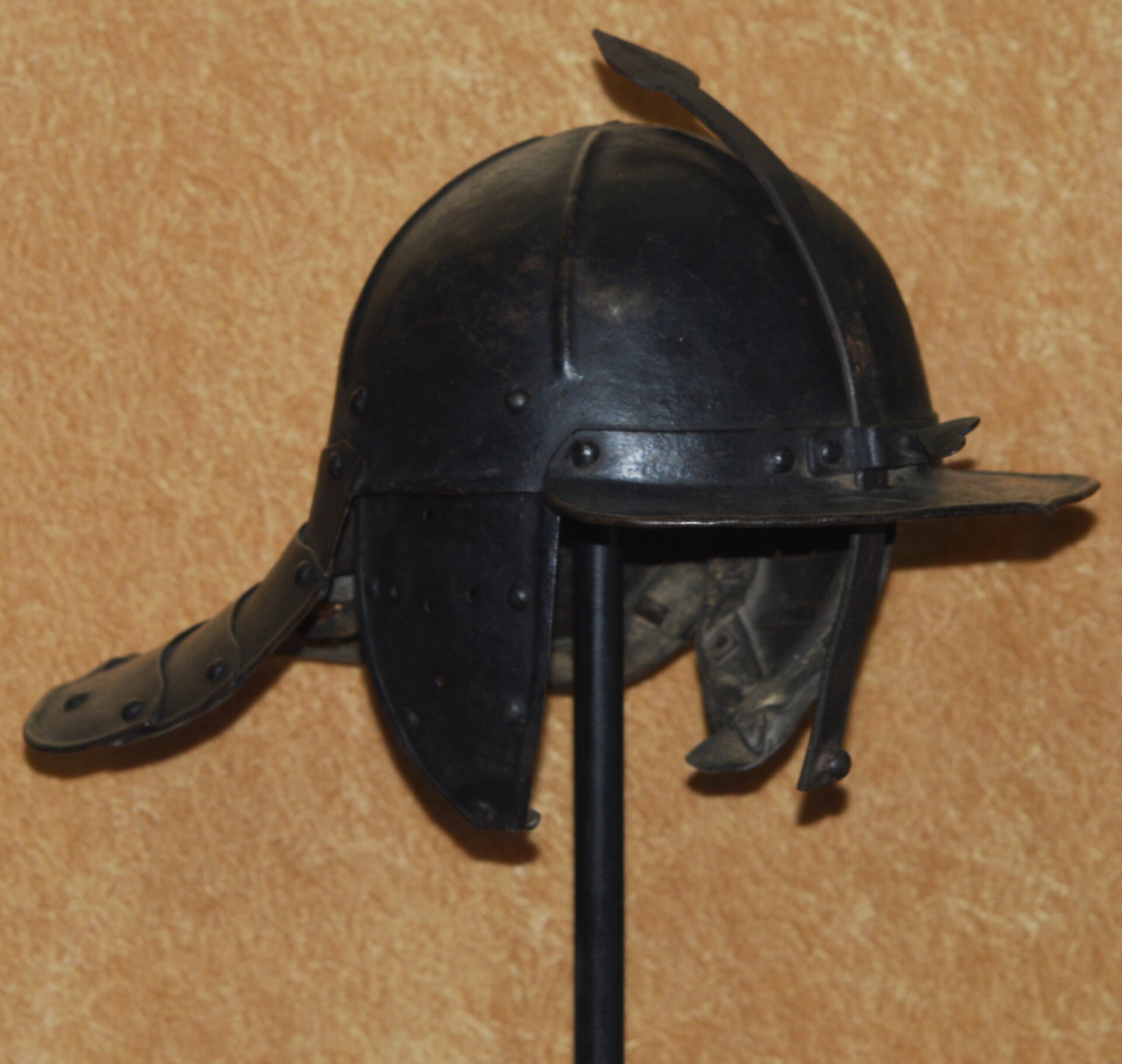
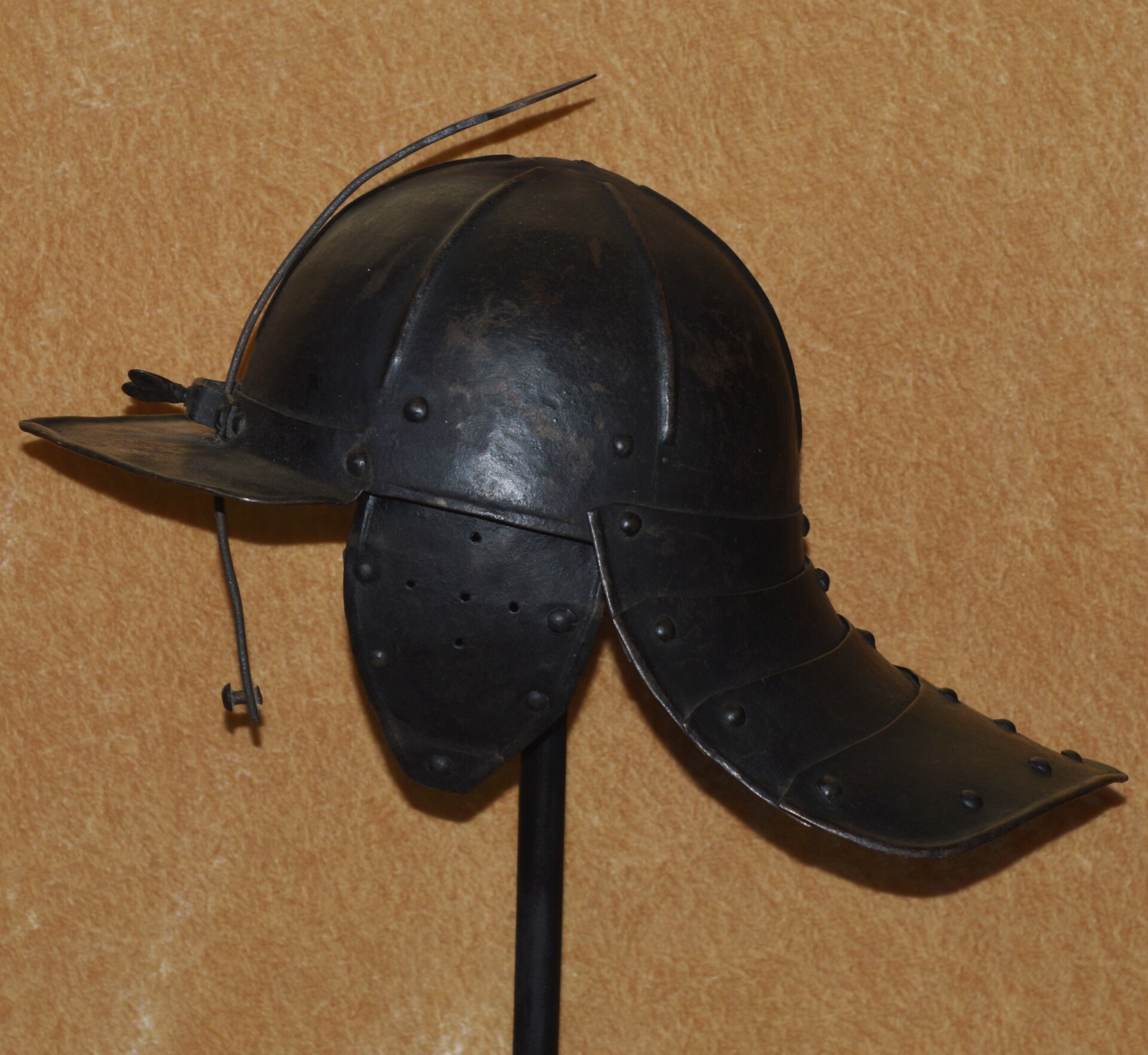
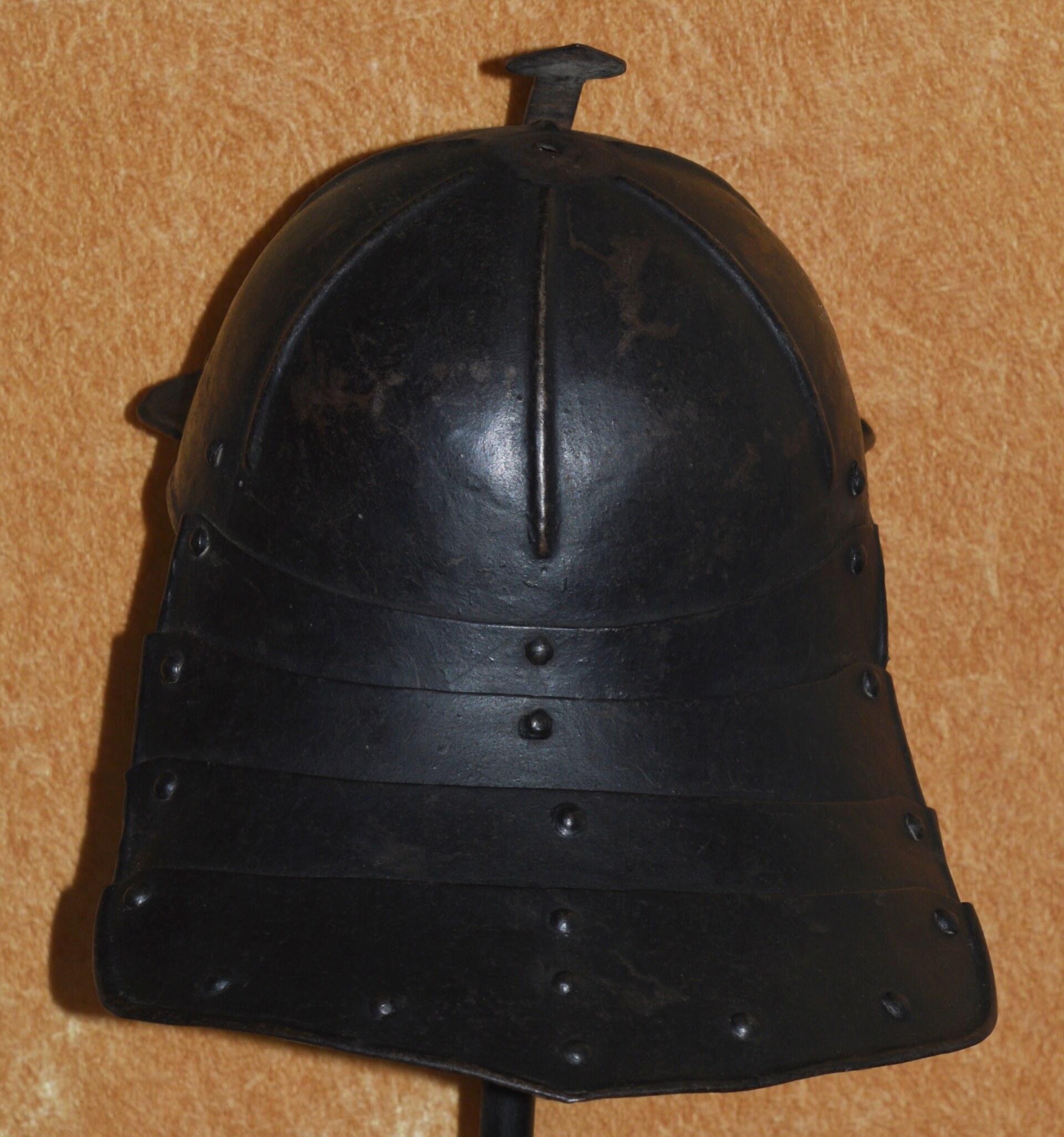
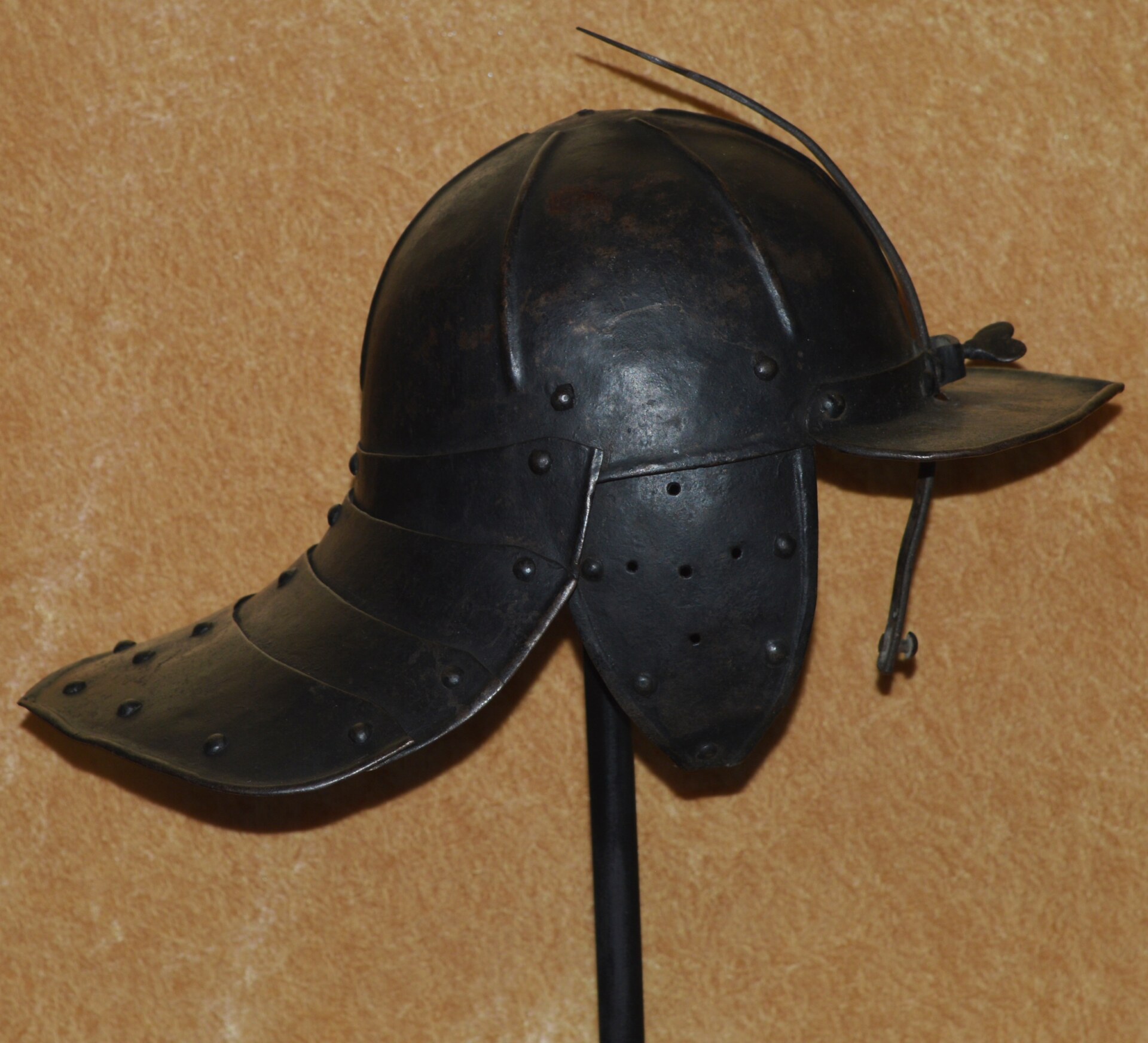
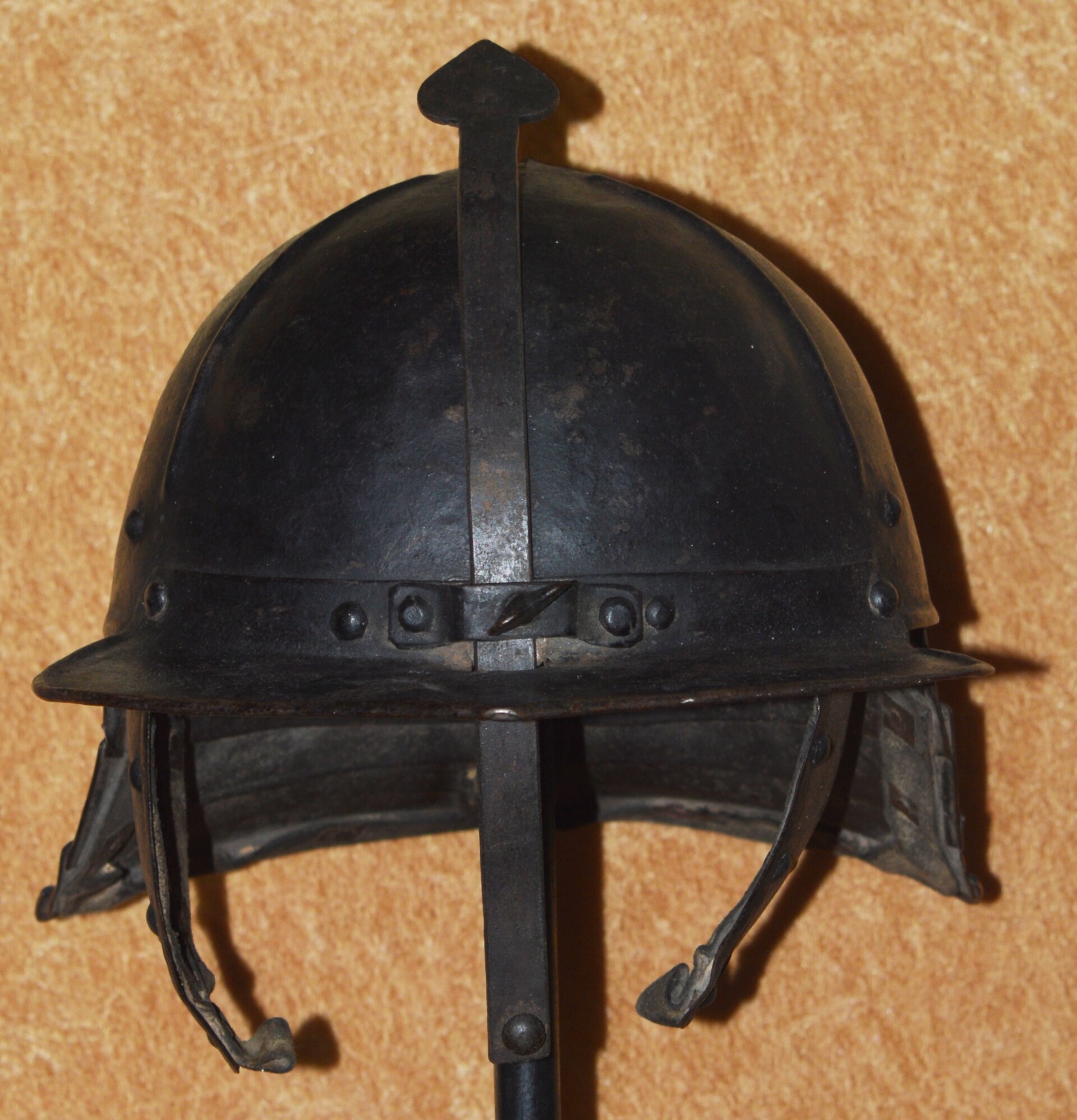
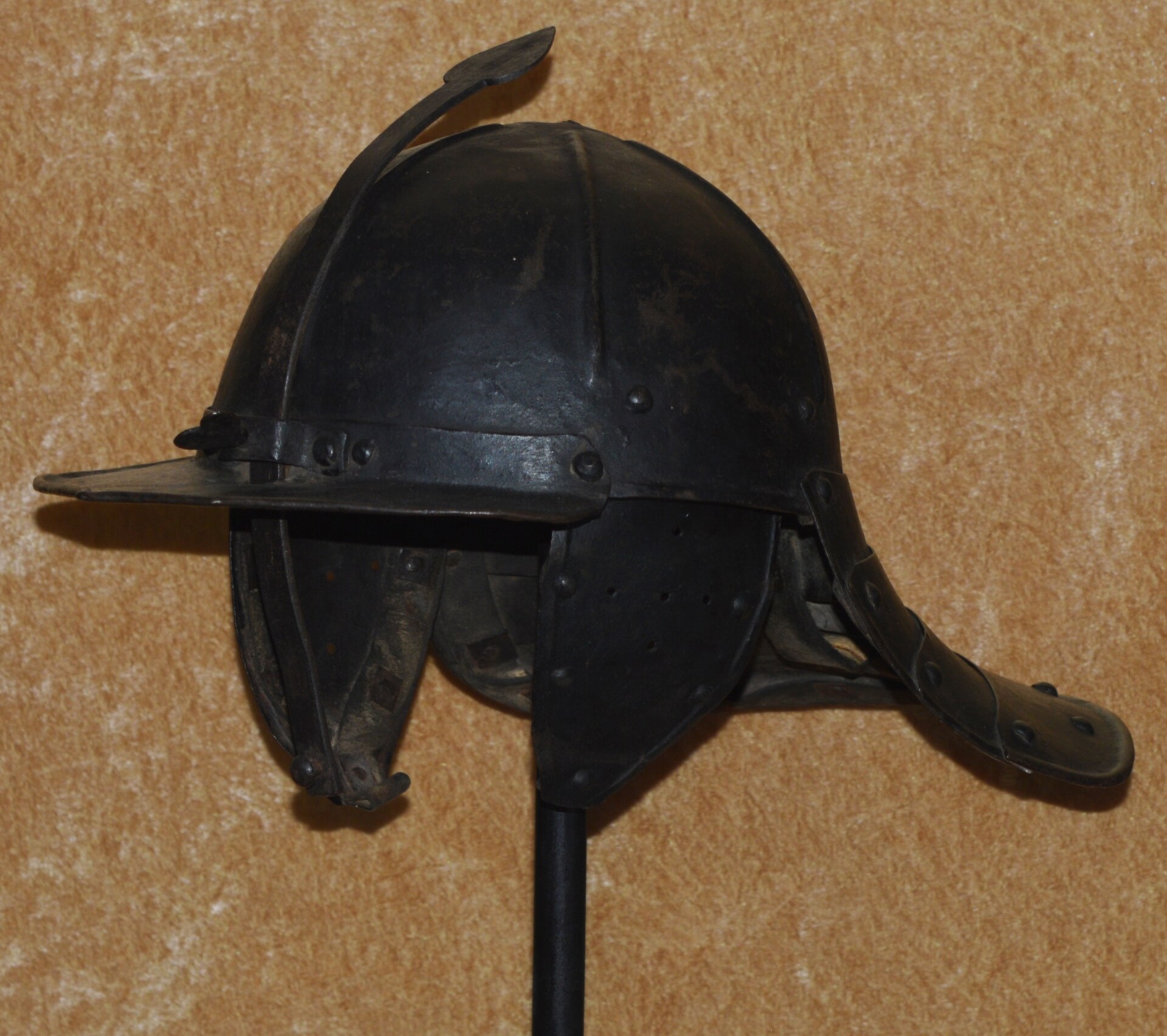
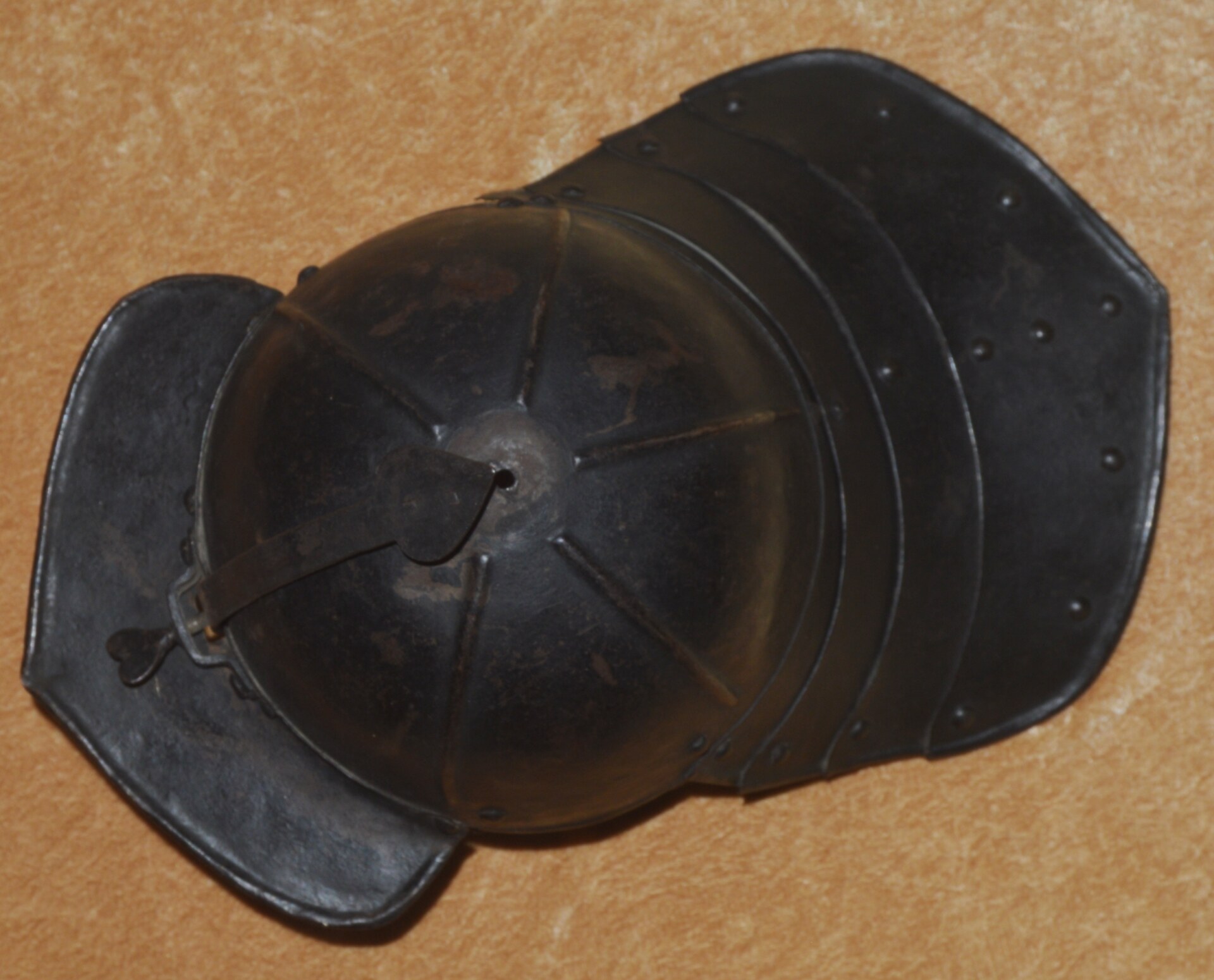
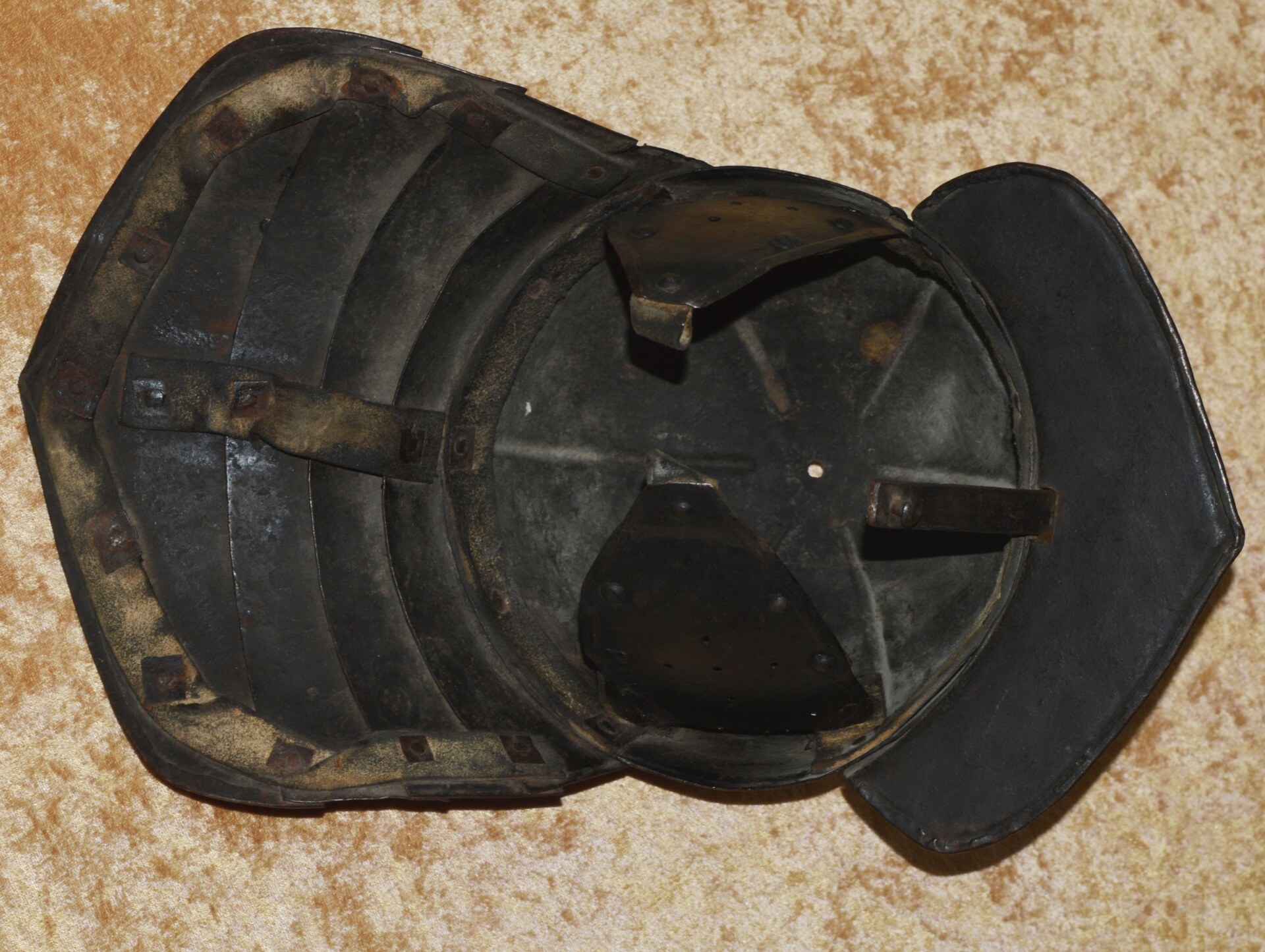
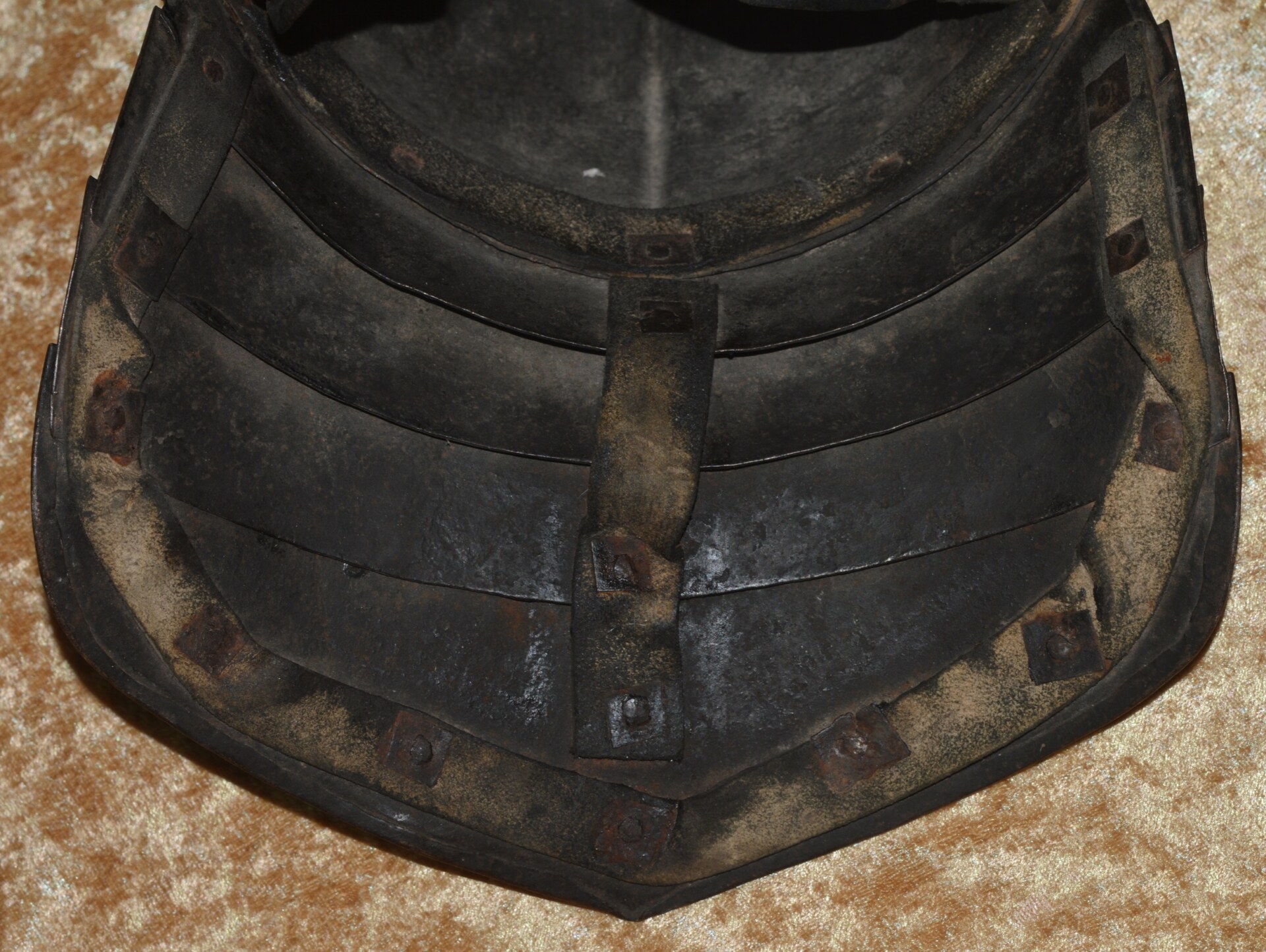
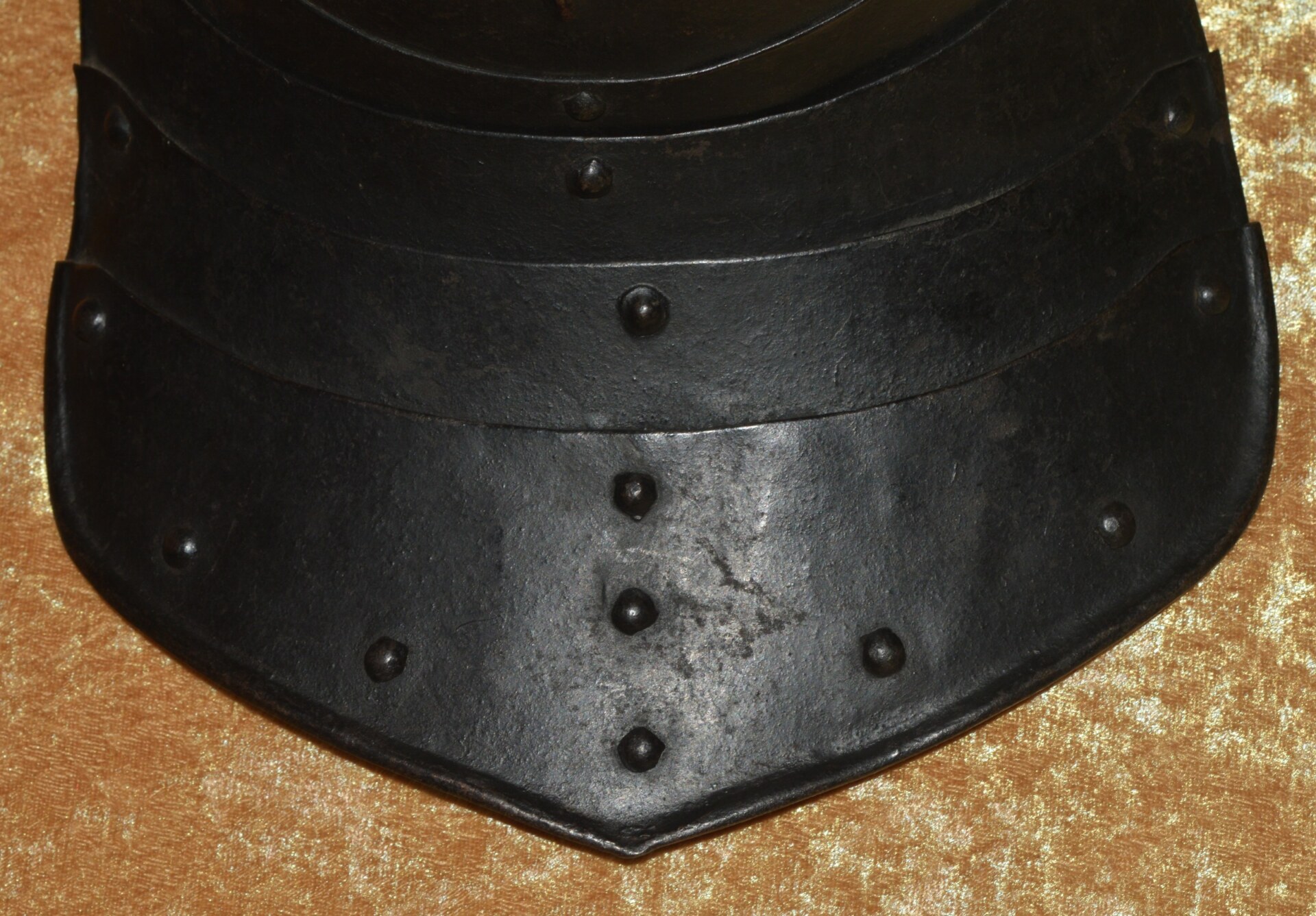
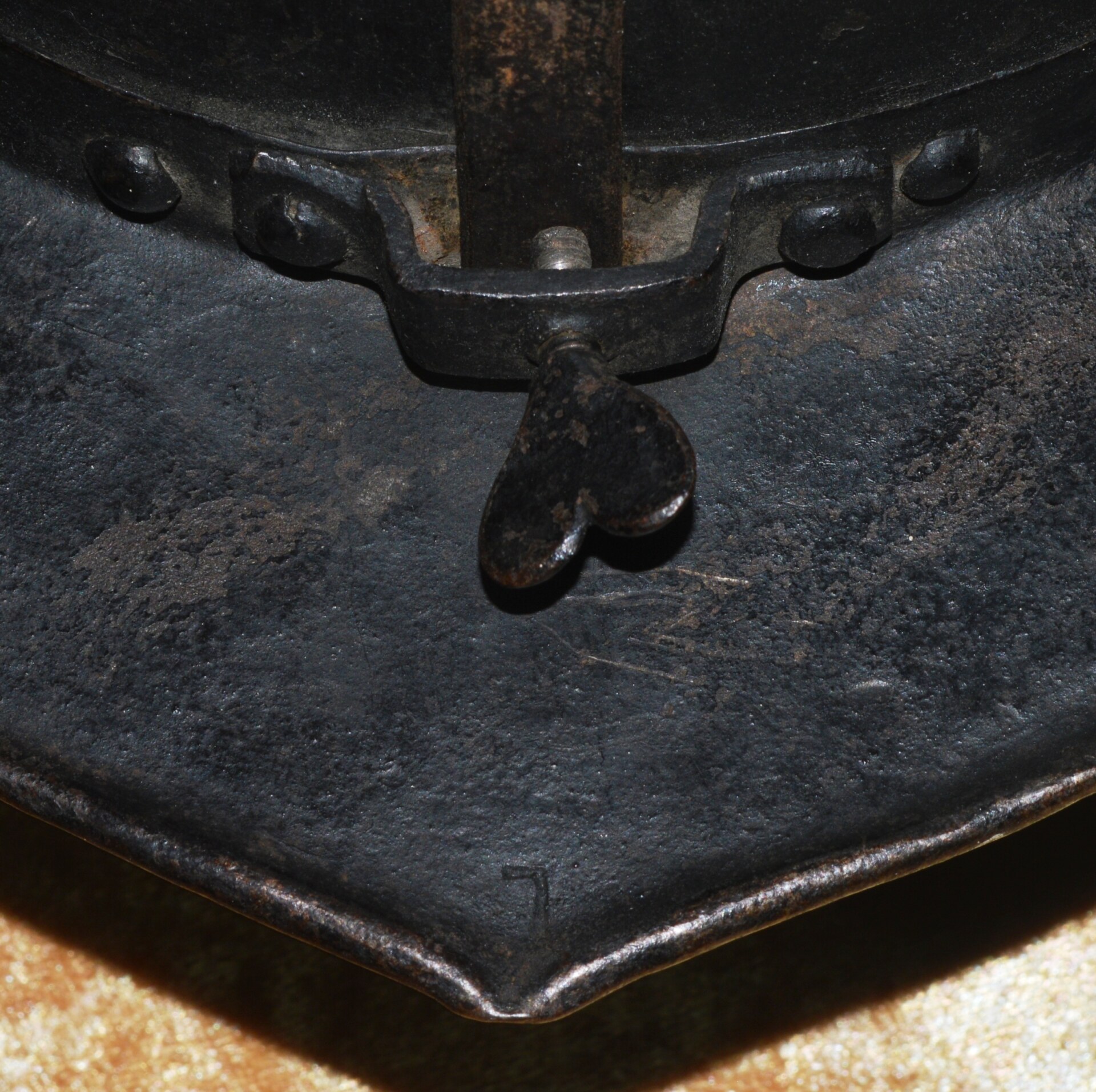
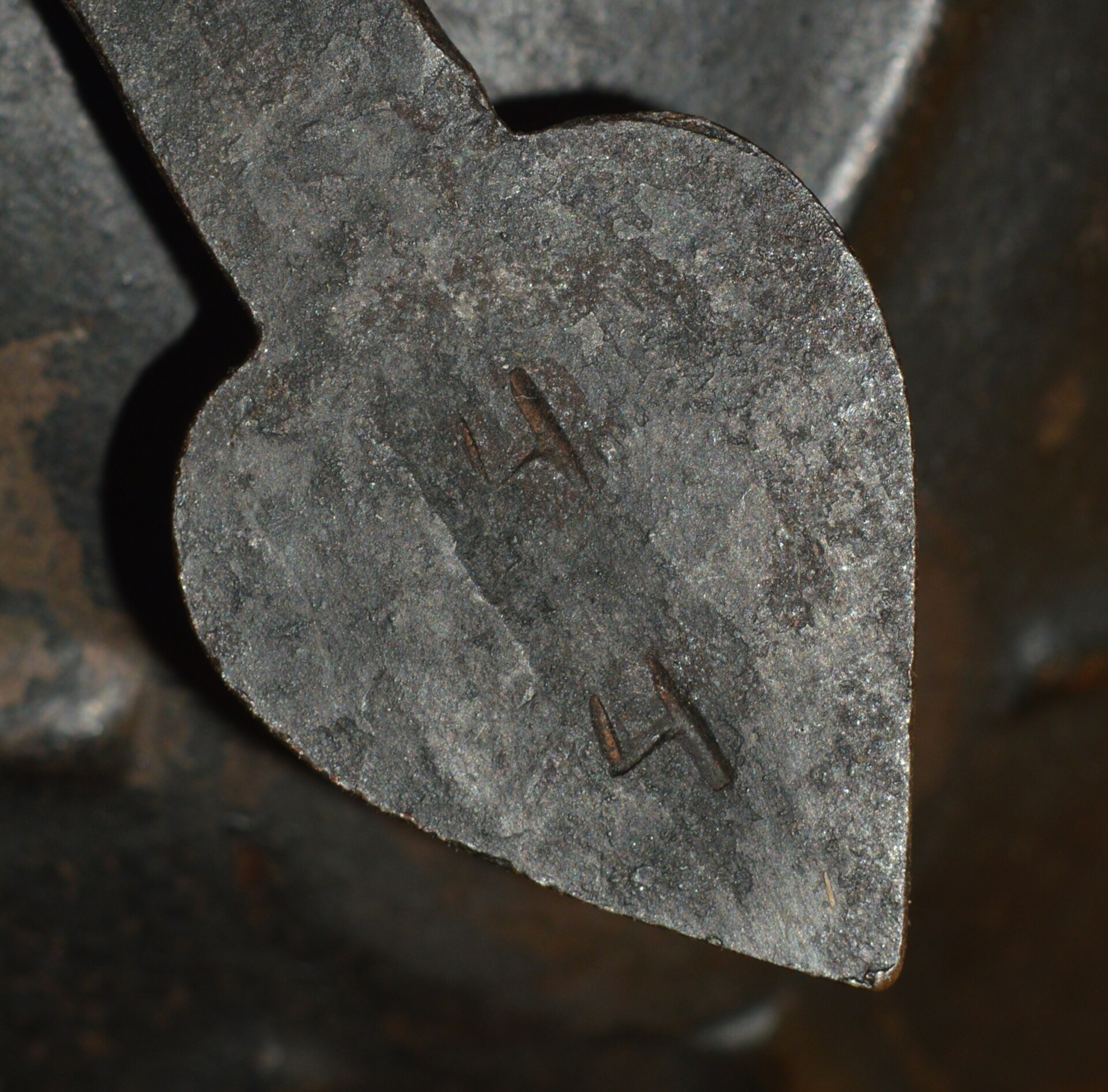

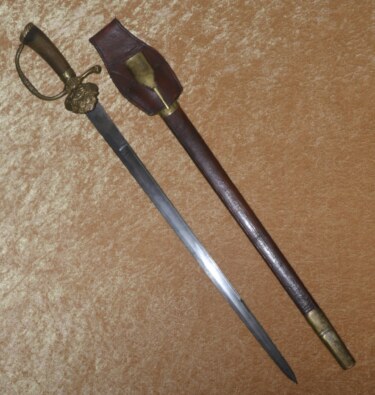 German Hunting Sword, Late 18th C
German Hunting Sword, Late 18th C 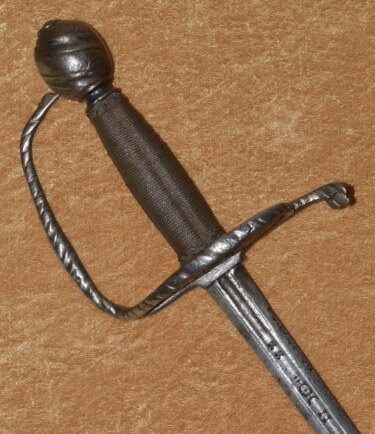 European Field Sword/Rapier, Last Quarter 17th C
European Field Sword/Rapier, Last Quarter 17th C 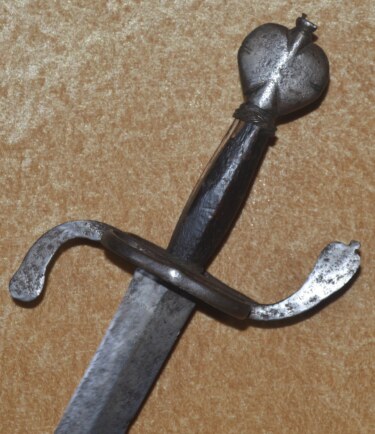 North European Broadsword, ca. 1630
North European Broadsword, ca. 1630  French AN XIII Flintlock Pistol
French AN XIII Flintlock Pistol